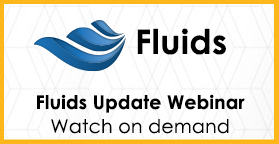
LEAP Australia is pleased to announce the release of ANSYS 2022 R2 which is now available to ANSYS customers across Australia and New Zealand from the ANSYS Customer Portal.
Ansys software and services reduce obstacles to enable customers to solve today’s complex engineering challenges. Engineering simulation has expanded beyond highly specialised experts and into mainstream product design and development, enabling more companies to save time, reduce costs, and innovate.
At the same time, engineering complexity has skyrocketed, requiring organisations to scale like never before, driving demand for advanced computing resources and cross-discipline engineering solutions. The new products, technologies, and tools that make up Ansys 2022 R2 enable experts to go deep with custom workflows for industry-specific applications while also extending broad ease-of-use features that turbocharge collaboration across teams.
3D Design with Discovery
Customers in aerospace and defense, electronics, and the automotive industry will reach simulation through accelerated associative workflows for bolted connections, the addition of porous media modeling in Live Physics, and the availability of high-frequency electromagnetics within Discovery.
In addition, more analysts can now benefit from Ansys Discovery’s geometry preprocessing workflows, award-winning Live physics, and interactive user experience.
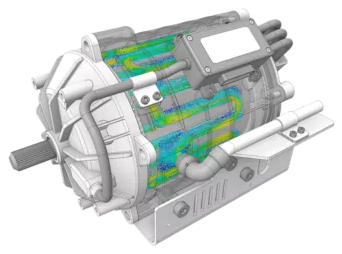
Acoustics Simulations
A new update in the Ansys Sound ASD for EV module allows users to export an entire Sound project, improving communication and hand-offs between manufacturers and suppliers to facilitate in-vehicle infotainment integration. In addition, the Ansys Sound VRS module has enhanced sound quality for helicopter flight training simulators, enabling new sound sources to be achieved at known control points. Finally, updates to the Sound SAS module provide new representations and calculations for Power Spectral Density (PSD) and linear RMS values.
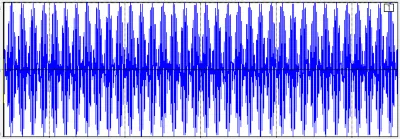
Additive Manufacturing
Every Ansys Mechanical User can now identify and minimize the risk for build errors and ensure high-quality parts through process simulation for Metal Laser Powder Bed Fusion (LPBF), Directed Energy Deposition (DED), and Metal Binder Jet (MBJ).
- Workflow Improvements – Automatic Distortion Compensation is the ability to optimize a distortion compensated model within a simple automated workflow, which improves first-time print success.
- Accuracy Enhancements – Consolidating additive technologies include Laser Power Bed Fusion (LPBF) scan pattern effects in Workbench Additive. With the consolidation of additive technologies, all users can rapidly increase simulation fidelity, capturing localized strain variations in each deposition layer.
- Speed Performance – Introducing a Machine Learning (ML) model for predicting thermal strain can result in 10X time savings. Users can now easily explore the benefits of varying process setup parameters such as power, speed, and scan vector.
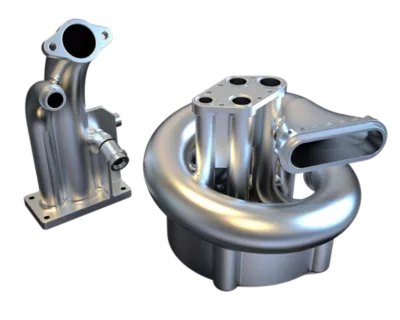
Autonomous Vehicle Simulation
With your choice of driving simulation tool, you can quickly and easily verify and validate your ADAS/AV features, including sensor (radar, LiDAR, and camera) perception. And AVxcelerate can generate reliable, synthetic training data enriched with ground truth information for all sensor types; this data is essential for AI/ML-based perception algorithm training and validation.
With Ansys 2022 R2, Ansys AVxcelerate continues to enhance and accelerate the development of safe autonomous driving with industry-leading capabilities for simulation-based radar, camera, and LiDAR sensor verification and validation, along with massive data creation utilizing AI capabilities. New NCAP functionality enables OEMs to reduce physical testing to achieve 5-star NCAP ratings.
Co-simulation capabilities with IPG Automotive CarMaker enhance international traffic sign management to allow OEMs and automotive suppliers to ensure the safety of ADAS features. For example, Traffic Sign recognition or Intelligent Speed Assist by validating the perception algorithms using Ansys physics-based sensors simulation.
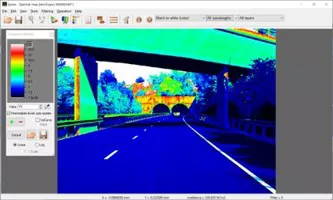
Connect
Highlights include:
- Ansys ModelCenter’s Behavior Execution Engine (BEE) ensures that system design meets behavioral requirements early in the development lifecycle.
- Ansys Minerva’s new ECAD viewer streamlines PCB design and analysis workflows providing designers and engineers a common interface to better collaborate in the design and analysis stages of the lifecycle.
- Ansys optiSLang Pro license option allows simulation analysts using Ansys Workbench and Ansys Electronics Desktop to run parametric design studies using state of the art AI/ML algorithms directly within their analysis.
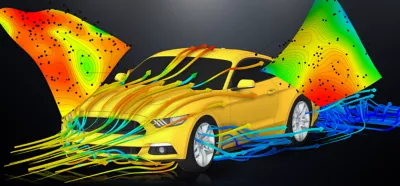
Digital Mission Engineering
The new features included in this release are designed to enable aerospace and defense organizations to digitally transform the entire product life cycle: design, analysis, and operations.
- Large Constellation Improvement – As the commercial space segment continues to grow and the deployment of so-called “mega-constellations” looms, the need for modeling and simulation of space assets is more urgent than ever. With STK 2022 R2, you can include the Satellite Collection object within chained calculations, to better analyze and understand complex routing options for connecting ground-based assets.
- RF Interference at Receiver Object – Designing and analyzing communications systems is complicated by the increasing congestion of the RF spectrum, making simulation of these systems and the RF environment essential. With STK 2022 R2, you can analyze the effects of a crowded RF environment on an individual receiver, making it quicker and easier to characterize interference and develop mitigation strategies.
- EOIR Improvements – STK 2022 R2 improves the modeling capability for EOIR sensor simulations by providing enhanced central body property maps with overlapping texture maps. It enables you to model temperature, emissivity, and reflectance at higher fidelity. Adding the ability to model ground vehicles and ships in EOIR generates sensor-to-target metrics that incorporate these objects.
- ODTK: 3D Moving Targets, Spice File Attitude, and CentralBody Gravity Estimate – ODTK 2022 R2 provides an introductory capability to estimate the trajectory of moving vehicles in a non-orbital environment on or near the surface of Earth (or another planetary body). It improves small-body mission planning and operations, and we’ve added native support of SPICE formatted attitude files for spacecraft attitude.
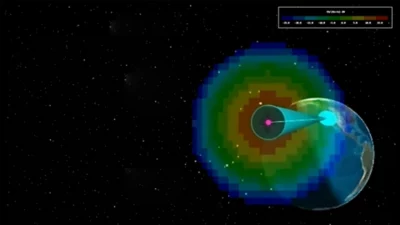
Digital Twin
As part of Hybrid Analytics, Fusion Modeling capability allows users to accurately model the residual between model and prediction, allowing users to capture and include any remaining or missing physics into the digital twin.
The new release also includes powerful enhancements in ROM building process to better predict the accuracy of the ROMs with absolute and relative error estimates during the build process of Dynamic ROMs.
The new library Toshiba ACCU-ROM Toolkit makes designing Electric Power Steering (EPS) system easier, that enables fast simulation for both the electronic circuits and mechanical components.
Several enhancements to the Modelica UI are available in this new release, such as automatic connector sizing for array connections, support for Dialog and Final Annotation, and graphics improvements.
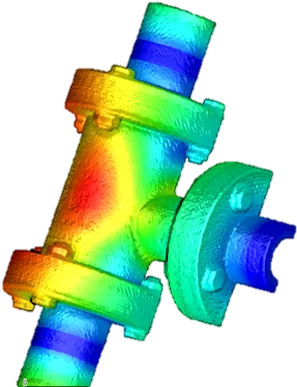
Electronics
Ansys Electronics solutions continue to bring best-in-class technologies to address PCB, 3D IC package, EMI/EMC, thermal, cabling, and electromechanical design challenges with significant advancements in 5G, autonomous, and electrification simulation.
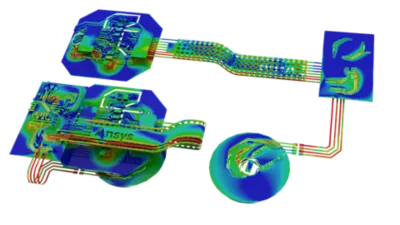
Embedded Software
Improvements to the Coverage Analysis Assistant further speed-up complex and time-consuming model and code coverage analysis activities.
- New CERT C compliance report: analysis of the SCADE Suite KCG high-quality generated code which ensures compliance CERT C / Safe & Secure Code Generation
- Coverage Analysis Assistant Improvements
- 3D Rendering for Embedded Displays

Fluids
Updates include:
- Substantially reduce simulation solve time and power consumption using the multi-GPU solver in Fluent with added support for transient flows including scale resolving simulation (SRS), non-confromal interfaces (NCI), and moving reference frames (MRF)
- Automate processes, build custom workflows and craft customized solutions with PyFluent, opensource access to Fluent via Python.
- Simulate production and consumption of hydrogen with a new proton exchange membrane (PEM) electrolysis model and validated hydrogen combustion models.
- TurboGrid’s automated hybrid meshing technology now supports complex blade tips, end-wall contouring and large blade root blends.
- Model cavitation, phase change and leakage modeling in liquid pump and valve simulations using Forte.
- Performance enhancements using Rocky’s particle assembly feature.
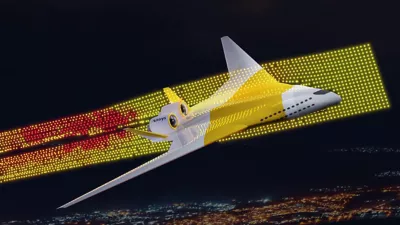
Materials with Granta
Users of Ansys Mechanical can use the new Ansys Material Calibration app available in Granta MI™ to generate accurate material models from experimental data, to help drive simulation accuracy with materials across the simulation team.
With material now exportable from any Ansys Granta product to any Ansys flagship solver and a supercharged version of Granta MI Pro, we’re making it easier to take the first step to achieving Material Intelligence.
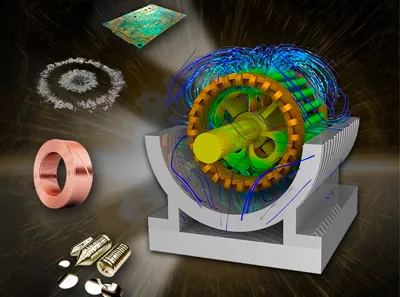
Optics
Speed design and boost accuracy with the latest Ansys Speos release. The 2022 R2 release delivers powerful capabilities that speed time to result, improve simulation accuracy, and expand interoperability with other Ansys products. Link powerfully with CAD data thanks to a bi-directional link that eases the end user’s workflow by shortening the design iteration cycle.
2022 R2 brings the launch of Ansys Zemax OpticStudio, providing everything you need to simulate, optimize, and tolerance your optical designs. Design high-confidence virtual prototypes that you can thoroughly analyze before manufacturing.
With Ansys Zemax OpticsBuilder, design exceptional products efficiently and confidently deliver them to manufacturing. Empower engineers to work together on a single, shared file across optical and mechanical teams. Analyze the performance of optomechanical packaging and create optical drawings with a single click.
The 2022 R2 release of Ansys Lumerical introduces powerful new capabilities to extend usability, accuracy, performance, and functionality. These new features enhance modeling capabilities for electro-optical devices, from SPADs to microLEDs and lasers, and empower photonic integrated circuit (PIC) designers with capabilities for process-aware design and electronic-photonic design automation (EPDA).

Photonics
- Developments to optical solver cores and HPC performances
- New workflows for modeling a variety of sub-wavelength structures in Lumerical optical solvers and then optimizing the macro-scale design in Zemax to see how it looks to a human using Speos
- Improved simulation workflows for EAMs and LEDs with multi-quantum wells, as well as for single-photon avalanche photodetectors
- Streamlined design of photonic devices and circuits by using the new capabilities in our process-aware custom component design flow and EPDA flow
- Advancements to INTERCONNECT and Photonic Verilog-A models generated by CML Compiler.
- New INTERCONNECT solver for modeling quantum behavior in photonic integrated circuits.
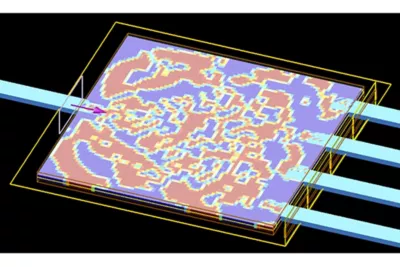
Safety Analysis
Our A&D customers benefit from improved quantitative fault tree analysis at the highest performance level. Furthermore, with Ansys 2022 R2 we offer componentized fault-tree logic embedded in design models with Component Fault Trees. This significantly reduces the effort of defining fault-trees for huge modular designs while at the same time increasing consistency and quality of such fault trees.
In the Automotive domain, we have extended the FMEA capabilities to support hybrid-failure nets as required by the VDA-AIAG FMEA standard. The integration with design models has also been extended to increase reusability in the design process.
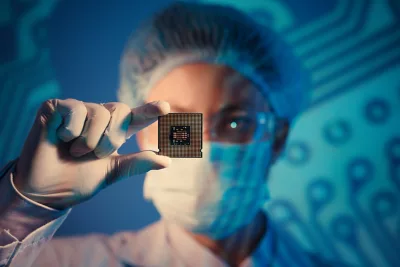
Semiconductors
- Enhanced thermal integrity flow for sub-5nm and 3D-IC designs, including new hierarchical Chip Thermal Models (CTM)
- SigmaDVD technology delivers new power integrity capabilities in RedHawk-SC, accurately analyzing dynamic voltage drop (DVD) effects in leading-edge designs
- Reduced Order Models (ROM) enable a high-capacity analysis of chip and package systems while maintaining result accuracy
- Incremental fixing of IR-drop with the new IR-ECO flow that integrates RedHawk-SC signoff analysis with popular implementation tools for physical ECOs
- Introducing PathFinder-SC, built on the cloud-optimized SeaScape platform, delivers 4x speed and 3x memory reduction essential for electrostatic discharge (ESD) analysis
Achieve up to 2x speed with RaptorX distributed processing, essential for on-die electromagnetic analyses of high-speed signals
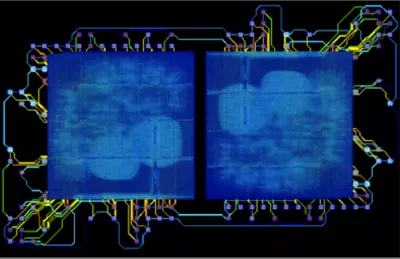
Structures
In this release, significant updates include:
Access multipurpose workflows quickly and efficiently with a new intuitively designed and customizable toolbar for Ansys Mechanical. The toolbar includes 14 add-ons, including the NVH Toolkit, DesignLife Fatigue, and Bolt Tools.
New functionality within Ansys Sherlock enables users to export PCB thermal results from Ansys Icepak and structural results from Ansys LS-DYNA into Sherlock for component lifetime predictions, enabling a more advanced closed-loop reliability workflow.
An automated co-simulation workflow with Ansys Motion and Ansys Maxwell solves the details of electromagnetic fields and kinematics associated with moving magnets for advanced magnetic latching capabilities.
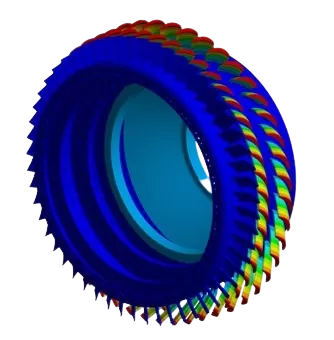
Ansys 2022-R1 Updates:
3D Design Updates
Ansys 2022 R1 expands Discovery’s astonishing Live physics in the critical area of thermal management through the addition of coupled fluid-solid simulation.
This fast, fault-tolerant approach means that the simulation of heat exchangers, liquid cooling devices, and exhaust systems is now dramatically easier to perform and up to 50x faster allowing testing of more design variations for expanded insight and discovery. Enhancements include:
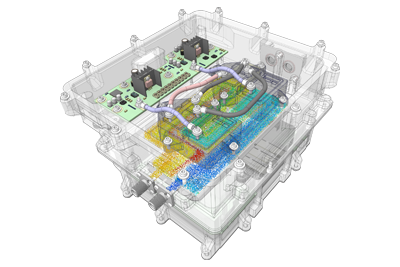
- Fast and easy thermal management–Coupled fluid-solid thermal analysis for Live physicsallows fast prediction of heat dissipation and transfer under many fluid flow scenarios.
- Geometry preprocessing –Support for beams and shells, flex cable wrapping, and small units make Discovery a compelling tool for working with a wide range of geometries and use cases.
- Workflow Innovation –Expanded history tracking, improved hinge and spherical joints, as well as newpostprocessing capabilities, such as local slice monitors and interactive probes, accelerate the simulation journey from setup to results.
- Additional physics –Compressible flow for both Live and High-fidelity physics, temperature-dependent material properties, and 1D springs expand the scope and depth of Discovery’s simulation capabilities.
Acoustic Simulation Updates
For 2022 R1, Ansys VRXperience Sound will be officially renamed to Ansys Sound
For this release, the focus is around improved sound quality and design for our users, including:
- A color map display for the ISO 532-1 standard so users can immediately check the time (or RPM) and frequency to ultimately reduce noise annoyance.
- Fully released FRF (Frequency Response Function) capability allows users to characterize the transfer function of a system by estimating frequency response and minimising the effect of noise at the receiver. Results can be transferred to Fluent to filter a simulation result for a more robust analysis.
- Optimise acoustic performance and reduce noise annoyance with tonality indicators that can be calculated in display order with the ability to switch order levels. This is especially of interest to customers working with rotating machinery.

Additive Manufacturing Updates
Ansys 2022 R1 continues to expand toolsets for Additive Manufacturing Users, streamlining your workflows between design, simulation and manufacturing.
In addition, every Ansys Mechanical User can now identify and minimize risk for build errors and ensure high-quality parts through process simulation for metal powder bed fusion (PBF), directed energy deposition (DED), and metal binder jetting.
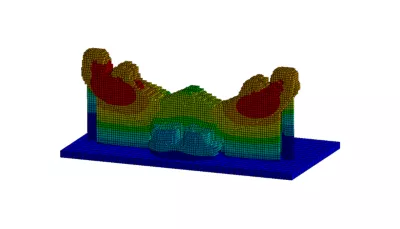
- Streamline your workflows with directed energy deposition (DED) – introducing DED process simulation to the Ansys Additive Portfolio, providing capabilities from predicting macro-level temperature distortions and stresses to prevent build failures and provide trend data for improving designs for additive manufacturing including part orientation and part build order.
- Continued improvements for power bed fusion (PBF) process simulation – double the strain generation speed for scan pattern simulations, paired with an expanding material library.
- Workflow speed improvements – fully threaded solver support, multi-platform additive wizard support, Ansys Mechanical parametric design language (MAPDL) solver enhancements, and now providing a seamless transfer from Ansys Additive Products to Ansys Workbench and Ansys Mechanical.
Autonomous Vehicle Simulation Updates
The 2022 R1 release continues to drive an open architecture with the ability to connect Ansys physics-based sensors to third party driving simulators like IPG Automotive CarMaker or Carla, while bringing new innovations for sensor definition.
You can quickly and easily verify and validate your ADAS/AV feature including sensor (radar, lidar and camera) perception with the driving simulation tool of your choice. And, with new radar and LiDAR functionality, you can validate larger and more complex sensors regardless of GPU constraints.
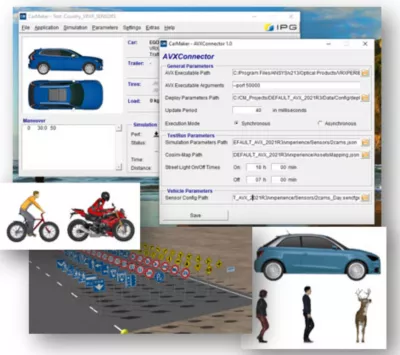
Connect Updates
The Ansys Connect product collection is new in 2022 R1 and includes Ansys Minerva, Ansys optiSLang, Ansys Granta and Ansys ModelCenter.
Ansys Connect allows you to create a connected digital thread by connecting various simulation tools and the corresponding assets with each other and with the rest of the product lifecycle ecosystem, such as CAD designs, requirements database, system architecture model, and more.
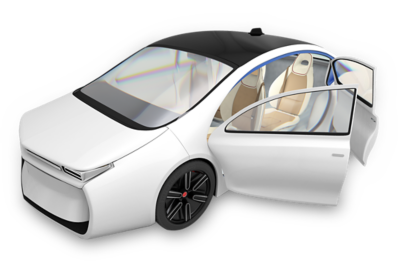
Highlights include:
- Ansys optiSLang’s new connectors for LS-Dyna, SpaceClaim, Nastran and ModelCenter, along with the new AI/ML-based optimization algorithms from Probaligence, enables orchestrated and optimized simulation workflows.
- Ansys Minerva allows simulation experts to create apps from their simulation automations that nonexperts can take advantage of thus minimising the expertise gap.
- New in Ansys 2022 R1, Ansys ModelCenter improves the connection between your systems architecture models (SAM) and project requirements to build more accurate simulation models.
- Ansys Cloud has enhanced admin capabilities that include the ability for admins to create and manage user groups, allocate budgets to company projects, and monitor cloud usage.
Digital Mission Engineering Updates
Ansys 2022 R1 adds an array of new features and performance improvements for analyzing and visualising complex systems in the context of your mission in STK, including:
- Expanded rendezvous and proximity operations (RPO) capabilities. STK raises the bar for modeling RPO, adding new curvilinear calculation objects that you can use to compute quantities that are more naturally consistent with a given orbit than previously possible in STK.

- FMI/FMU compatibility plugin. STK introduces a plugin enabling you to integrate with Ansys physics solvers through FMUs, so you can create a mission simulation that accounts for dynamical characteristics of mechanical, electronic, and fluids subsystems.
- Ansys Discovery CAD to STK. STK includes a plugin to Ansys Discovery and Ansys SpaceClaim that provides a seamless method for converting detailed CAD models into the glTF format preferred for STK. You can even imbue these converted models with additional features, such as sensor attachment points, steerable elements, and articulations.
- Modeling large constellations. You can now use a satellite collection to represent an entire constellation of satellites as a single object in STK to provide basic visualisation, a minimal memory footprint, and efficient save and load operations.
Digital Twin Updates
The new release of Ansys Twin Builder delivers predictive analytics with up to 98% level of accuracy by combining physical and virtual sensors.
New features available to enable faster deployment of your digital twin, easier workflows, and Web-App application for online interaction with your model:
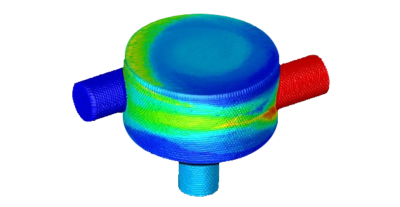
- Powerful enhancements and new capabilities in twin deployment, including ability to calibrate/tune simulation model parameters so the simulation outputs match data.
- Develop quick web application prototype to interact with your simulation.
- Better Workflow & user experience with Modelica enhancements, saving your development time.
- Major development in Reduced Order Model (ROM) capability to get a better control on your ROM output.
Electronics Updates
The Ansys 2022 R1 update grows the capabilities and functionality of its electronics solver products in both breadth and depth.
- EMA3D Cable – much faster simulation times at deeper granularity, improved model libraries, and cable harness connectivity enhancements
- EMA3D Charge – dielectric breakdown simulation, refined meshing, and simulation of radiation-induced ionization for space applications
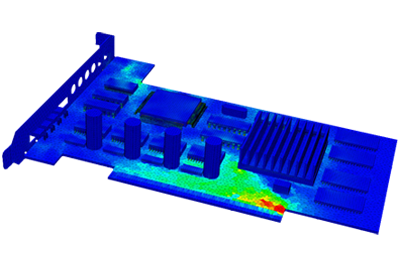
- HFSS – Phi Plus Meshing for 3DIC packaging simulation, modeling of rough surfaces for ADAS, and fast broadband frequency sweeps
- Icepak – Links to Ansys Redhawk and Ansys Fluent, along with improved multiphysics flows within Ansys Electronics Desktop
- Maxwell – poly-phase electric machine ROM, Litz wire, and a faster simulation option for systems requiring FEA
- Motor-CAD – optiSLang interface and NVH assessment
- SIwave – temperature gradient input from Ansys Icepak and automated functionality when used in HFSS 3D Layout
Embedded Software Updates
Ansys 2022 R1 continues to grow leading capabilities to support international standards for safe and interoperable embedded software in A&D (DO-178C, ARINC 661, FACE), Automotive (ISO 26262, AUTOSAR) and Industry (IEC 62508, EN 50128).
Now all software V&V activities are further accelerated thanks to a unique model coverage assistance capability for both designers and testers.

Enhancements include:
- New visual identity and UX improvements for SCADE Suite, including new capabilities like Digital Verifier, plus the further expanded AUTOSAR Classic support.
- Cockpit Display System DO-178C certification guidelines and SCADE Display graphic effects library has been added into SCADE Display.
- SCADE Architect and Avionics package now has full support of FACE 3.1 modeling with improved UX in the browser.
- Model Coverage Assistance and ALM Gateway have been implemented into SCADE Test and SCADE Lifecycle.
Fluids Updates
This release features major enhancements in the Fluids portfolio that accelerate meshing, setup and solve time.
- An aerospace-dedicated workspace in Ansys Fluent streamlines external aerodynamics simulations with built-in best practices, optimized solver settings, parametric capabilities, and more.
- A brand-new Multi-GPU Fluent solver (beta) accelerates steady-state simulations, with results showing 4 high-end GPUs provide the same performance as more than 1,000 CPUs.
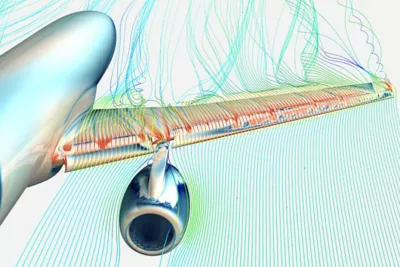
- Efficiently run acoustics simulations in Ansys Fluent with the new sponge layer treatment and perform sophisticated analyses with sound composition and runtime Discrete Fourier Transform (DFT) framework.
- Ansys TurboGrid’s hybrid meshing technology automates the meshing of complex turbomachinery blade designs.
- Accelerate Ansys Rocky simulations by reducing computation in regions with low particle interaction using a dynamic domain capability.
- Ansys Forte’s Eulerian two-phase mixture approach to modeling liquids and two-phase mixtures enables quick and accurate simulation of liquid pumps and valves.
Materials Updates
2022 R1 sess Ansys Materials expand its data and tools offering into the 5G, electronics and electrification technology areas – extending Ansys Material Intelligence to Ansys Electromagnetic Simulation.
For the first time Ansys Granta MI™ will incorporate Machine Learning capabilities for intelligent additive manufacturing. Optimise the relevant parameters to meet your target criteria to reduce sample manufacture and characterisation of additive materials previously done by trial and error.

- EMI/EMC, Electric Machine, SI/PI and Thermal engineers using Ansys Electronics Desktop tools can now access Granta MI in their native solvers – with access to a new range of 7,200+ electromagnetic material records. For faster, more accurate and traceable electromagnetic design simulation.
- The volume of data for additive manufacturing continues to grow. To harness this trend Machine Learning capabilities have been integrated into Granta MI™ for process parameter optimisation, data visualisation and training. Bringing value to sparse and noisy additive data.
- Assess a material’s environmental impact by using the comprehensive sustainability data in the unique MaterialUniverse™ – updated with the latest ecoinvent data for all engineering materials.
- Significant enhancement in our range of polymer data for non-linear material models – now with over 105,000 polymers.
Optics Updates
The 2022 R1 release delivers powerful capabilities that speed time to result, improve simulation accuracy and expand interoperability with other Ansys products.
- LightField, a new Ansys file format to facilitate the storage and sharing of pre-computed intermediate simulation results for sub-structures within an optical system to improve simulation time and allow for block-box sharing between suppliers and their customers for improved performance and IP protection.
- Surface property plug-in capabilities to allow for custom optical surface models written in C++ or Python (including third-party material descriptions such as from Ansys Lumerical FDTD).

- Several productivity enhancements including parameter manager, preset manager, UX enhancements, and the accelerated import of CATIA projects.
- Speos now offers GPU Compute delivering dramatic improvements to simulation performance (benchmarks indicate a 140x to 260x speedup on average) with no loss in accuracy and with an unprecedented performance to cost ratio.
- New post-processing to better model dynamic scene effects such as roller shutter and motion blur.
Photonics Updates
The 2022 R1 release delivers powerful capabilities that speed time to result, improve simulation accuracy and expand interoperability with other Ansys products.
- Lumerical Simulations are now compatible with the powerful Ansys Cloud.
- New surface model creation for Speos (BSDF and diffraction gratings) allows you to account for visual perception effects with Speos Human Vision (beta availability).
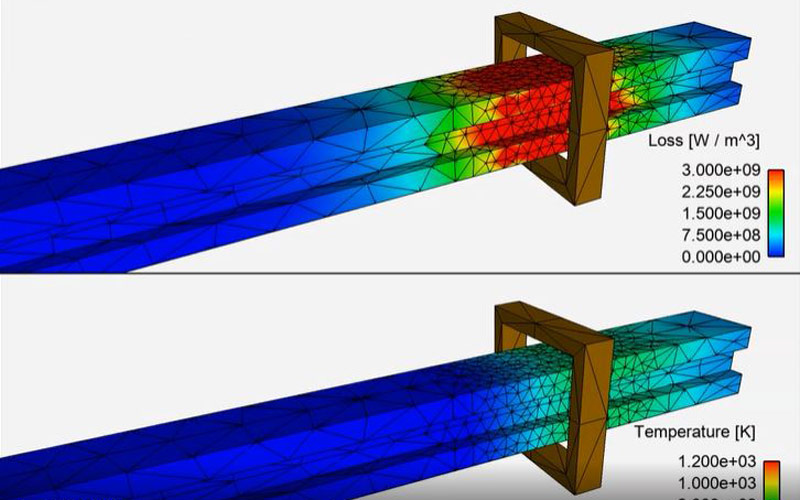
- Updates to support optiSLang workflows including advanced optimization with Lumerical STACK for display applications (beta availability).
- Direct bridge to communicate layout data between Virtuoso and FDTD/MODE enabling direct parameter extraction and optimization of p-cells.
- New integration between Ansys Lumerical INTERCONNECT and KLayout, enables a layout driven design and simulation workflow for photonic integrated circuits.
- Simulate effects of self-heating on solid-state laser performance in PIC by directly importing measured or simulated gain spectra with current and temperature dependence into Lumerical INTERCONNECT.
- RCWA solver for fast simulation of multi-layer stacks with periodicity and surface patterning (beta availability).
Safety Analysis Updates
In Ansys 2022 R1, Ansys medini analyse provides new features that further enable the efficient holistic application of safety, reliability and cybersecurity analysis methods.
The tool enables our customers to be compliant with latest applicable industry domain standards.

- Aerospace – benefit from fully ARP4761(A) standard compliant fault tree analysis that is combined with even further improved usability.
- Automotive – incorporate latest ISO 21434 (released 08/2021) automotive cybersecurity analysis.
- Digital Safety Manager – project dashboard provides configurable KPIs allow users to track and follow the safety project progress derived automatically from actual project data.
- Hardware and Semiconductor – variability support in FMEDA that dramatically reduces the efforts when delivering variants of users from designs to multiple customers.
Structures Updates
2022 R1 introduces a new product, Ansys Forming. Ansys Forming is an all-in-one forming simulation software built to digitally design and validate every step of the sheet metal forming process leveraging the speed and accuracy from the LS-DYNA solver.
- Increased confidence in correlating test and simulation data with the new noise, vibration, and harshness (NVH) toolkit inside Ansys Mechanical. Users can easily read physical test data and compute the modal assurance criteria (MAC) to compare simulation data and physical test data.
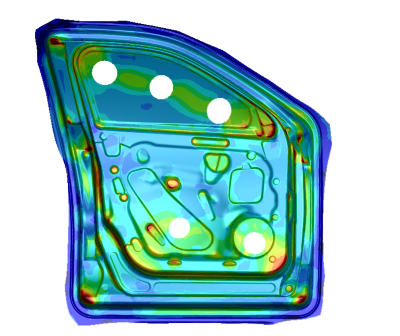
- Introducing directed energy deposition (DED) process simulation to the Ansys Additive Portfolio, providing capabilities from predicting macro-level temperature distortions and stresses to prevent build failures and provide trend data for improving designs for additive manufacturing including part orientation and part build order.
- Additional insights into printed circuit board (PCB) thermal performance with high-fidelity PCB models from Sherlock that can now be exported to Ansys AEDT Icepak for thermal analysis simulations.
- LS-DYNA solver continues to add exciting new features in many areas like dedicated isogeometric analysis (IGA), advanced new materials, and material laws for multiphysics applications, which can be used for battery-abuse modeling, electrophysiology, and many more areas.



